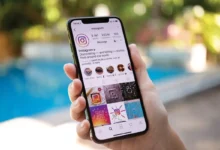Mobile phones have become an important accessory to everyone. With widespread use of mobile applications, it has become necessary to level up the security. Mobile applications are particularly vulnerable and have been hacked a lot in recent times. It is extremely difficult to secure apps as they have app developers and work on different types of operating systems. There has been a solution found to this through something known as App Shielding.
App shielding is a security measure through which any interference or intrusion to the app is effectively dealt with and makes the app resistant to attacks.
IMPORTANCE OF APP SHIELDING
- DATA SECURITY: App shielding ensures that one’s apps are safe from any intrusion and thus it safeguards sensitive information of the user such as their personal information and financial details from getting hacked and being misused.
- PLATFORM PROTECTION: One of the most important reasons for app shielding is that it offers cross platform security. It allows developers to secure applications in different types of operating systems such as IOS and Android. It also ensures security in different types of devices.
- INCREASES USER TRUST: App shielding increases faith and belief in users that the platforms they use are secure and trustworthy. It facilitates trust and understanding between users and developers of applications as it reassures them that their data is adequately protected.
- SECURES PURCHASES: In-app purchases become extremely secure with the use of app shielding. Transactions are made securely as it prevents unauthorized access to payments gateways and protects users and businesses both from any type of fraud.
- REDUCED LEGAL LIABILITIES: App shielding ensures and removes any risk of financial loss and reputational damage that as it ensures no intrusion of any kind take place. This protects developers from any legal liabilities that might ensue later.
BEST TYPES OF APP SHIELDING SOLUTIONS
- Code Obfuscation: This technique transforms the source code or bytecode of an application into a form that is difficult for humans to understand, making it harder for attackers to reverse engineer the code and extract sensitive information.
- Encryption: Encrypting sensitive data within the application or encrypting the entire application code can help prevent unauthorized access and tampering. This makes it harder for attackers to manipulate or extract valuable information from the application.
- Tamper Detection: Implementing mechanisms to detect unauthorized modifications to the application code or data at runtime can help identify tampering attempts and take appropriate action to protect the integrity of the application.
In conclusion, various threats such as reverse engineering and unauthorized modifications call for app security being safeguarded. Techniques such as obfuscation of code, white box cryptography and anti-tampering have been used by app shielding which has made it a proactive defence mechanism against attacks.
Robust application shielding goes beyond meeting the annual security audit requirements because this is very important to prevent recurrent attacks that may ruin brand reputation and lead to financial losses. Every software component should be secured; not only does this guarantee the compliance but also facilitates innovations by allowing smooth introduction of new functionalities.
Investing in a holistic application protection solution in short is not just about protecting from probable threats but rather about enhancing overall resilience and trustworthiness of applications so as to shield brand reputation and retain user faith.





